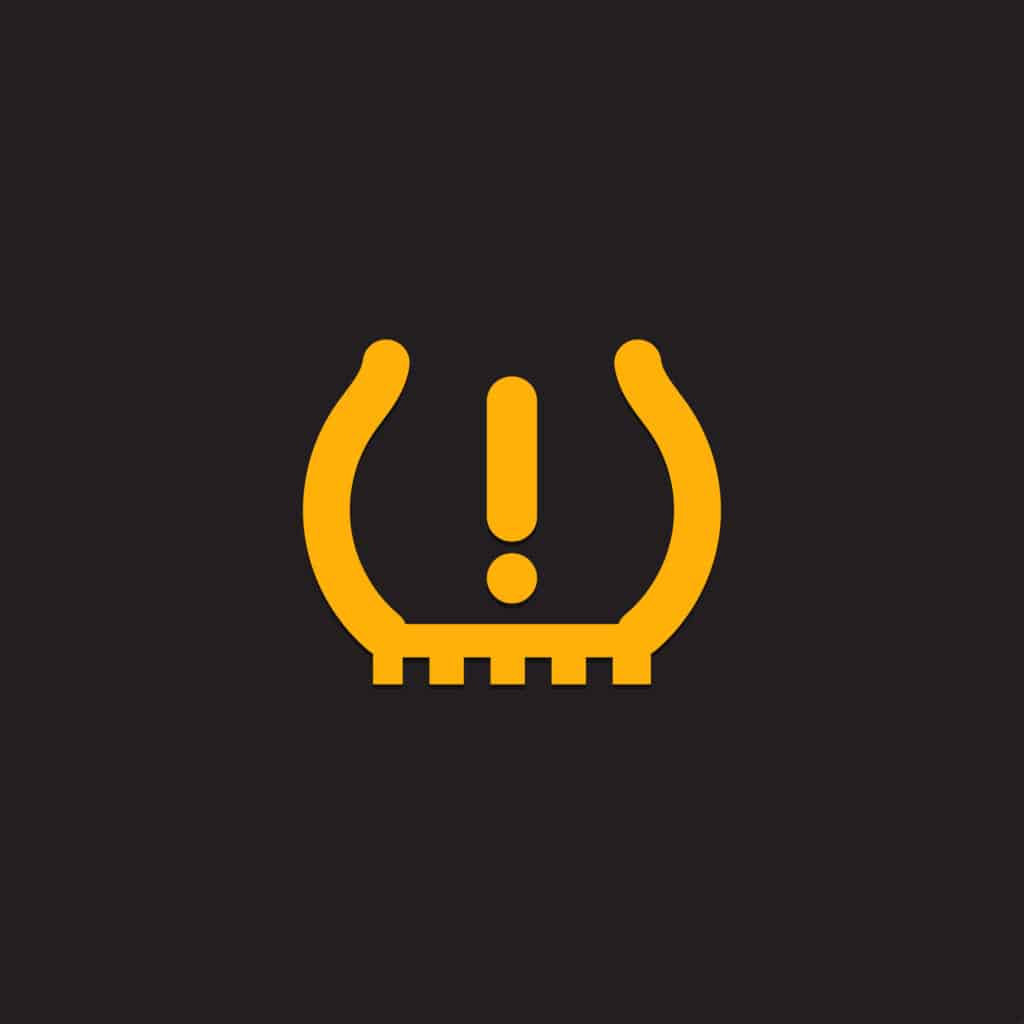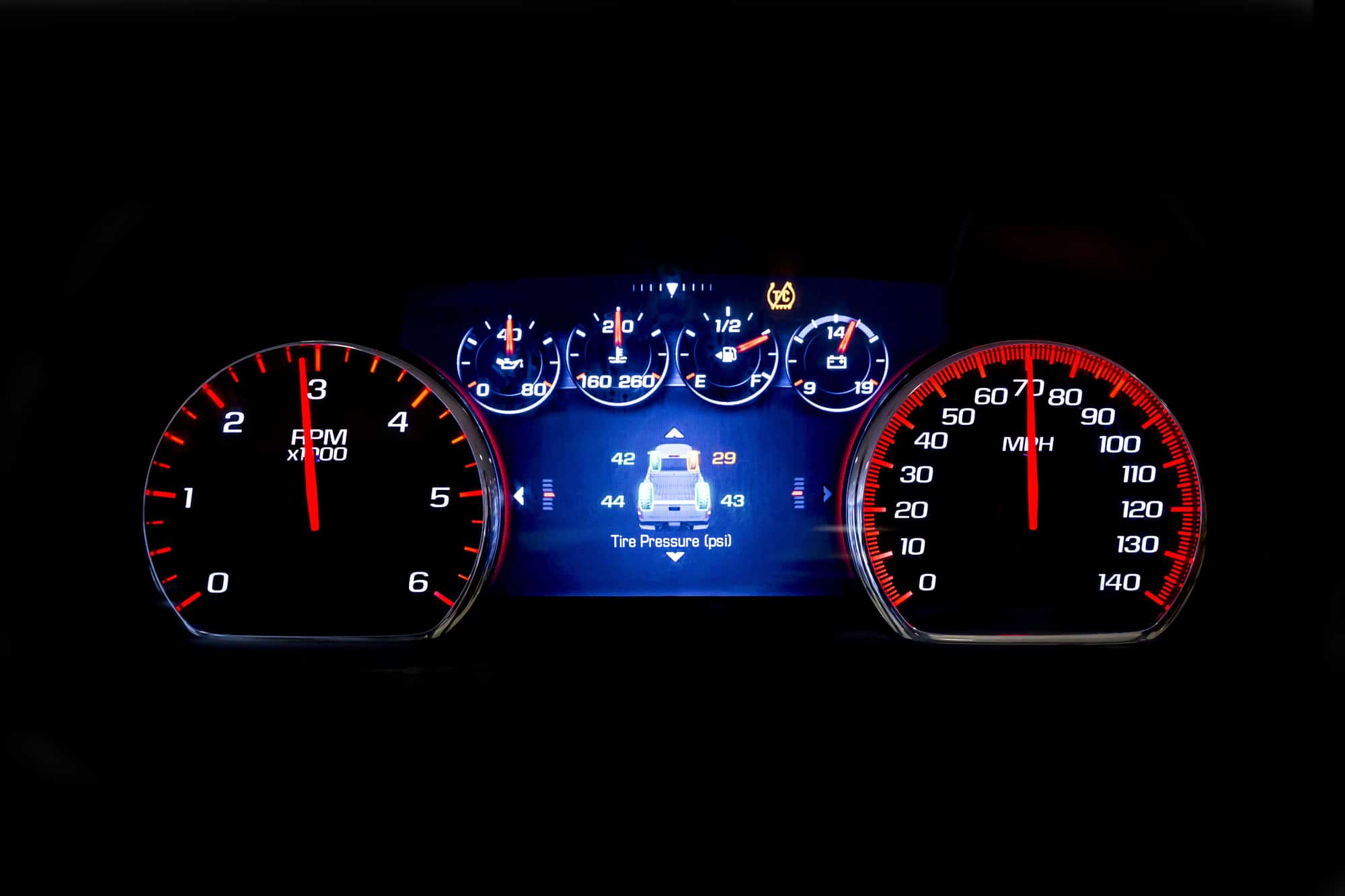A tire pressure sensor fault can be caused by a number of issues, including low or high tire pressure, a faulty sensor, or a malfunctioning TPMS control unit. Ignoring the warning light can result in reduced fuel efficiency, decreased tire life, and even a blowout, so it’s crucial to address the issue promptly.
Fortunately, there are several steps you can take to diagnose and fix problems with the tire pressure system. This may include checking the pressure with a gauge, inspecting the sensors for damage or wear, and resetting the TPMS control unit.
In some cases, you may need to replace a faulty sensor or control unit, which can be done by a qualified mechanic or DIYer with the right tools and knowledge.
In this article, we’ll explore the common causes and symptoms of a tire pressure sensor fault, as well as the steps you can take to diagnose and fix the issue.
What Is A Tire Pressure Sensor Fault (And What Causes It)?
A Tire Pressure Sensor Fault is an issue with the tire pressure monitoring system (TPMS) of a vehicle.
The tire pressure monitoring system (TPMS) is designed to monitor the air pressure in each tire and alert the driver if any tire is underinflated or overinflated.
If the TPMS detects an issue with the tire pressure, it will send a signal to the car’s ECU, which will then illuminate a light on the dashboard. This light is usually a bright yellow symbol that looks like an exclamation point (!) inside a “U” shaped symbol.

When this warning light appears, it is important to check the tire pressure of all tires to ensure they are properly inflated.
If the tires are properly inflated and the warning light remains on, it may indicate a problem with the TPMS itself.
What Causes A Tire Pressure Sensor Fault?
There are several common causes of a fault with the tire pressure monitoring system. These can include:
- Wiring issues: Faulty wiring in the TPMS can cause issues with the tire pressure sensors and trigger the warning light.
- Dead battery in the tire pressure sensor: If the battery in the tire pressure sensor dies, it will no longer be able to communicate with the car’s computer, triggering the warning light.
- Defective tire pressure sensor: A faulty tire pressure sensor can also cause the warning light to appear, even if the tire pressure is correct.
- Incorrect tire pressure: If the tire pressure is too low or too high, it can trigger the warning light.
If the tire pressure light is on and you are certain that the tires are inflated to the correct pressure then it is important to have the issue diagnosed and repaired as soon as possible.
Here are some causes of a tire pressure sensor fault in more detail:
Cause 1. Low Tire Pressure
One of the most common causes of a tire pressure sensor fault is low tire pressure.
When the tire pressure drops below a certain threshold, typically 25% below the recommended pressure, the TPMS sensor detects the change and sends a signal to the vehicle’s computer system. The computer then illuminates the TPMS warning light on the dashboard to alert the driver that one or more tires have low pressure.
When the tire pressure is low, the sensor may not be able to detect the pressure accurately, which can trigger the warning light. Low tire pressure can be caused by a puncture, a leak, or simply by normal wear and tear.
Cause 2. High Tire Pressure
High tire pressure can also trigger the TPMS light. The TPMS sensors are designed to monitor the tire pressure and send a signal to the vehicle’s computer system when the pressure exceeds a certain threshold, typically 20-25% above the recommended pressure.
When the sensor detects high tire pressure, it sends a signal to the computer, which illuminates the TPMS warning light on the dashboard to alert the driver of the issue.
High tire pressure can cause several issues, such as reduced traction and handling, increased wear on the tires, and reduced fuel efficiency. High tire pressure can be caused by over-inflation or by driving on hot roads or in hot weather.
Cause 3. A Dead Battery in the TPMS Sensor
A dead battery in the TPMS sensor can trigger the TPMS light because the sensor relies on battery power to function correctly. When the battery in the sensor dies, the sensor is no longer able to transmit data to the vehicle’s computer system.
When this happens the ECU will detect that it is no longer receiving data from the sensor and the TPMS warning light on the dashboard will flash to alert the driver of the issue.
A dead battery in the TPMS sensor can cause the system to malfunction, resulting in inaccurate tire pressure readings, which can affect the vehicle’s handling, fuel efficiency, and overall safety.
The batteries inside the tire pressure sensors have a limited service life, and when they die, they can cause a tire pressure sensor fault.
The battery life of a sensor can vary depending on several factors, such as the type of sensor, the manufacturer, and the operating conditions. In general, TPMS sensor batteries have an estimated lifespan of 5 to 10 years, with some sensors lasting up to 12 years.
However, the actual battery life can be affected by several factors including the operating temperature, the type of battery used and exposure to moisture or other contaminants.
Cause 4. Sensor Failure Due To Damage or Corrosion
Sensor damage or corrosion can trigger the TPMS light because the TPMS sensors rely on a small electronic circuit to detect changes in tire pressure. If the circuit is damaged or corroded, the sensor may not function correctly, resulting in inaccurate tire pressure readings.
Corrosion or damage to the sensor can also cause it to malfunction, resulting in inaccurate tire pressure readings, which can affect the vehicle’s handling, fuel efficiency, and overall safety.
TPMS sensors can be damaged by several factors, including salt, water, brake dust, physical damage, improper installation, battery failure, electrical issues, and exposure to extreme temperatures.
Cause 5. Changes In The Weather
Changes to the weather can trigger the TPMS light because temperature changes can affect tire pressure.
As the temperature drops, the air inside the tire contracts, causing a decrease in tire pressure. A rise in temperature causes the air inside the tire to expand, causing an increase in tire pressure.
The TPMS sensors detect changes in tire pressure and send a signal to the vehicle’s computer system. If the tire pressure falls below or exceeds a certain threshold, the computer system illuminates the TPMS warning light on the dashboard to alert the driver of the issue.
Therefore, it is important to monitor tire pressure regularly, especially during extreme temperature changes, and to adjust the tire pressure as needed to ensure optimal tire performance and to avoid triggering the TPMS light.
What Are The Symptoms of A Faulty Tire Pressure Sensor System?
A fault with the tire pressure monitoring system is usually caused by a fault with one of the system components and it is not related to the actual pressure of the tires.
Symptom 1. Illuminated TPMS Light
A TPMS (Tire Pressure Monitoring System) dashboard light is a common symptom of a faulty tire pressure sensor system.
The TPMS relies on sensors that are located in each wheel to monitor tire pressure. If the tire pressure sensor system fails or malfunctions, the TPMS may not be able to detect changes in tire pressure accurately.
If the vehicle’s ECU detects the issue it will normally illuminate the TPMS warning light in red on the dashboard to alert the driver of the issue.
Symptom 2. Inaccurate Pressure Readings
If the tire pressure sensor is faulty, it may provide inaccurate pressure readings to the car’s computer.
Inaccurate pressure readings are a common symptom of a faulty tire pressure sensor system. If the tire pressure sensor system fails or malfunctions it will provide inaccurate readings, which can affect the vehicle’s handling, fuel efficiency, and overall safety.
Inaccurate pressure readings may also cause the TPMS warning light to come on, indicating that there is an issue with the system, even if the tire pressure is within the recommended range.
Symptom 3. Difficulty in Controlling the Vehicle
In some cases, a tire pressure sensor fault can cause difficulty in controlling the vehicle.
Difficulty in controlling the vehicle is not a direct symptom of a faulty tire pressure sensor system. However, a faulty tire pressure sensor system can indirectly cause difficulty in controlling the vehicle.
If the tire pressure sensor system fails or malfunctions, it may not be able to detect changes in tire pressure accurately. This can cause the tire pressure to fall below or exceed a certain threshold, affecting the vehicle’s handling, traction, and stability and can cause difficulty in controlling the vehicle, especially during turns or sudden maneuvers.
This can lead to uneven tire wear, decreased handling, and increased stopping distances, which can be dangerous for the driver and passengers.
What Next – Diagnosing and Fixing A Tire Pressure Sensor Fault
When the tire pressure sensor fault light comes on in your vehicle, it’s important to diagnose the issue as soon as possible to avoid driving with underinflated tires.
Here are some steps you can take to diagnose a tire pressure sensor fault:
- Check the tire pressure: The first thing you should do when the tire pressure sensor fault light comes on is to check the tire pressure in all four tires. If any of the tires are underinflated, inflate them to the recommended pressure level and reset the system.
- Reset the tire pressure system: If the tire pressure is correct, try resetting the tire pressure sensor by following the instructions in your vehicle’s owner’s manual. This may involve pressing a button or holding down a combination of buttons on the dashboard.
- Inspect the sensors: If resetting the sensor doesn’t work, you may need to inspect the tire pressure sensors for damage or corrosion. To do this you will need to get the tires removed so that you can get to the sensor. Some cars use the ABS sensor to monitor the tire pressure. These are usually located at the back of the wheel hub and are easier to inspect and replace.
- Perform an OBD diagnostic readout: If you’re still unable to diagnose the issue, you may need to carry out an OBD diagnostic readout of the ECU memory. Possible generic error codes include U0127 and U0121. The U0127 code indicates that there is a communication problem between the ECU and the TPMS module, which can be caused by a loss of power or ground to the module, an open or shorted circuit, or a poor electrical connection.
FAQ
1. How do you know when a tire sensor is bad?
Signs of a bad tire sensor include a red TPMS warning light illuminating on the dashboard, inaccurate tire pressure readings, consistently low or high tire pressure, slow response time when reading the tire pressures, and no response from the tire pressure sensors when trying to reset the system.
2. Can you drive without tire sensors?
Yes, you can drive without tire sensors, but it’s not recommended if your vehicle came with them fitted. Tire sensors are an essential part of the tire pressure monitoring system (TPMS), which helps ensure that your tires are properly inflated and that your vehicle is safe to drive. u003cbru003eWithout tire sensors, you will not receive warnings about low tire pressure or other tire-related issues that could affect your vehicle’s handling, fuel efficiency, and overall safety. It’s also worth noting that some states require vehicles to have a functioning TPMS to pass safety inspections.
3. Where are tire sensors located?
Tire sensors are typically located inside the wheels, near the valve stem. In most cases, the tire pressure monitoring system (TPMS) sensors are attached to the inner part of the wheel rim, opposite the tire valve stem. Some sensors are also integrated into the valve stem itself. The exact location of the tire sensors may vary depending on the make and model of the vehicle.











I recently replaced one of my tire sensors after noticing the TPMS light on my dashboard, but the light hasn’t turned off yet. Could there be another issue beyond just a faulty sensor, and how can I troubleshoot it effectively on my own?
Is it possible to manually check my tire pressure accurately without relying on the TPMS, and could this method be more reliable in some situations than the sensor readings?